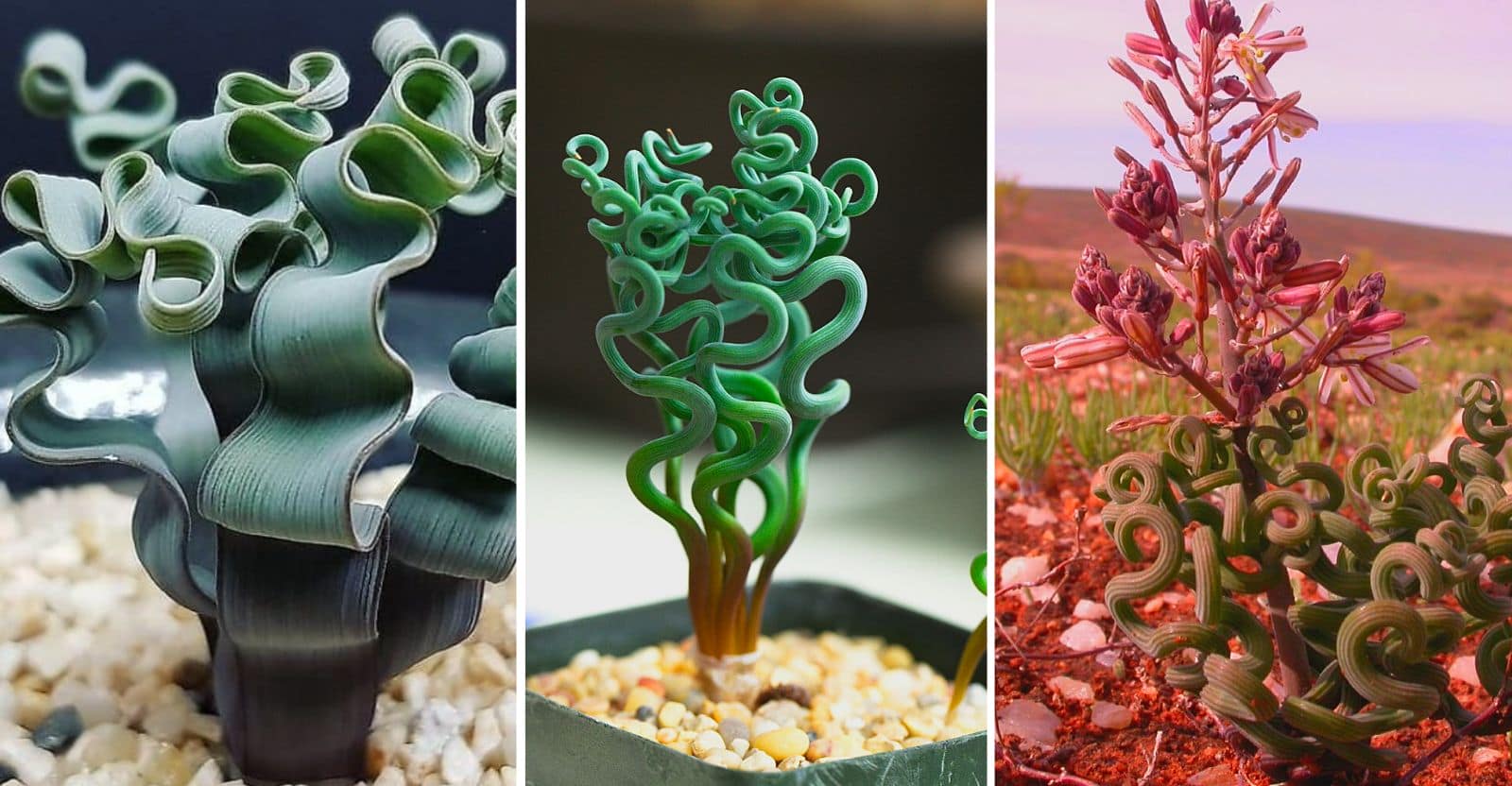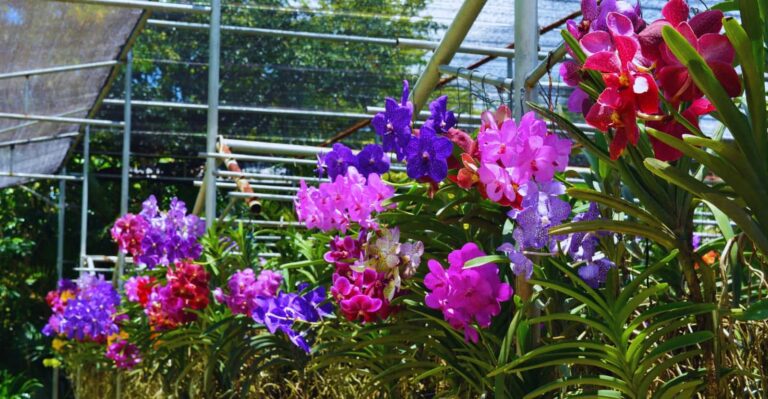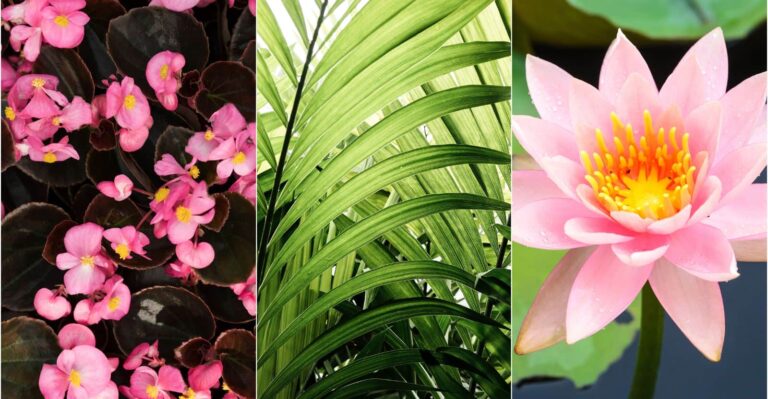Amazon has put together some great Home Gift Deals – save money and get your shopping done at the comfort of your home! Click here to see deals on Amazon
Trachyandra plants are prized for their curly, ribbon-like leaves that give them a very distinct decorative plant appearance.
These South African natives are considered to be the hardiest members of the succulent plant family, withstanding the chilly winters of the Mediterranean. The majority of its species are found in Western Cape.
This plant is drought-resistant and can survive in very arid locations, making them an excellent choice for areas that don’t get a lot of rainfall. They’re also beautiful plants that bloom lovely flowers with leathery leaves.
If you want to know how you can grow and care for it properly, either outdoor or indoor houseplants, we have covered it in-depth to help you get started.
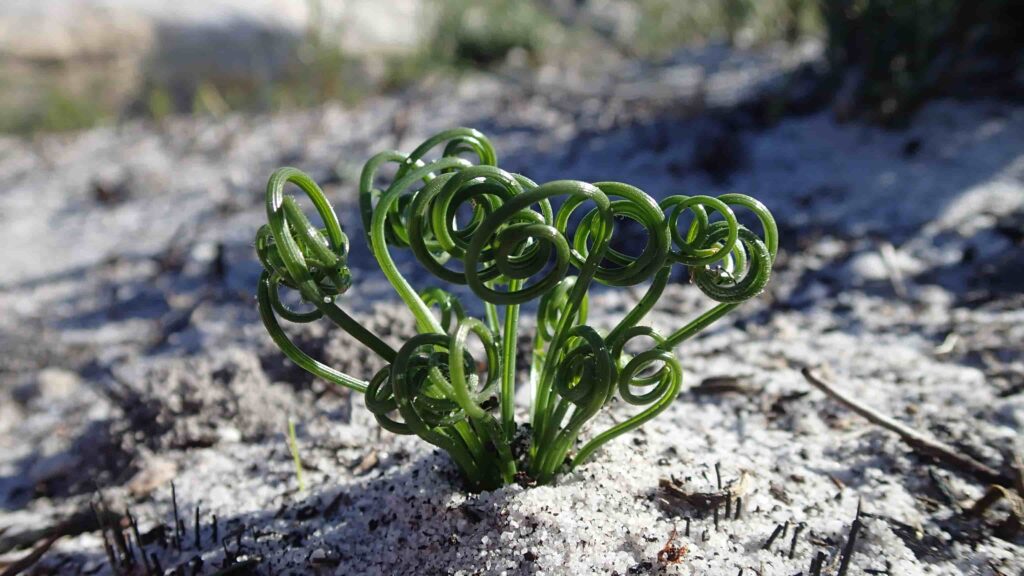
What is a trachyandra plant?
Trachyandra is a beautiful perennial succulent that is continuing to grow in popularity. It’s from a genus of Albuca that has over one hundred species. It’s native to Africa and known as “Veldkool,” which means cabbage, as indigenous people eat it as vegetables.
Trachyandra can grow up to 15 to 20 cm tall and 8 to 10 cm wide with curled edges of leaves. The leathery leaves are soft to the touch and come in a fresh green color. The leaves are springy and bloom white star-shaped flowers.
It blooms in late winter and early spring, with white to gray flowers on a solid flower stalk erecting from the plant’s base. The short-lived flowers (less than a day) are also blushed with subtle pink and brown lines.
The tuberous or rhizomatous trachyandra tortillis come in a variety of shapes and sizes. It’s a plant that you can pass forward through generations of families with proper care. It also works outstanding as a houseplant and is a perfect decoration for any room or office.
Trachyandra Tortillis plant growing summary
| Factor | Growth Condition |
|---|---|
| Soil | Well-drained sandy soil |
| Water | Water thoroughly once a week |
| Sunlight | 3 to 6 hours of direct sunlight |
| Temperature | 70 °F and 85 °F (21.1 °C and 29.4 °C) |
| Fertilizer | Half strength fertilization |
| Propagation | Seed, stem, or leaf cuttings |
| USDA Zone | 9 to 11 |
How to propagate trachyandra
Seed and stem cutting are two primary ways you can propagate trachyandra. As the succulents are flowering plants, you will be able to reproduce them from seeds.
But growing from trachyandra tortillis seeds is a slow and time-consuming process. It germinates best if sown in late winter to early spring. Nevertheless, if you’re keen on growing, choose a fresh seed that usually germinates more readily than an old seed.
Propagating trachyandra from seed
Step 1: Choose clean pots or trays in which you will be sowing seeds. Remember that as delicate seedlings germinate, they’re susceptible to attack from harmful bacterial and fungi. You should disinfect them with a solution of one part bleach to ten parts water.
The container shouldn’t be deeper than about 4 inches. Fill it with a planting medium that is equal parts to potting soil and either perlite, sharp sand, or pumice.
If you’re using a non-metallic planting tray, you can sterilize the soil in the microwave for about 90 seconds at full power.
Step 2: Allow the soil mix to cool and water it thoroughly. Let it drain, but not dry out completely. Scatter the healthy seeds over loose soil and press lightly into the mix. Gently layer the ground with sand to hold the seeds in place.
Step 3: Wrap the seed tray with plastic to hold in moisture and place the trays in a sunny location but out of direct sunlight. Ensure that the room temperature remains 60 degrees to 70 degrees F (15.6 degrees C to 21.1 degrees C).
Step 4: It usually takes three to four weeks for the germination to begin. Once you see seedlings appear, remove the plastic wrap while keeping the soil remain moisturized. Be careful with seedlings as they’re fragile, so you should moisten them with very fine mists.
Step 5: After the trachyandra plant is about six months old, you can transplant them into individual containers. You should gently lift the plants from the growing medium, set them into the new containers’ soil, and water it.
As an optional measure, you can top-dress the pot with sand, gravel, or pumice. This can help drain excess water while suppressing algae and moss growth.
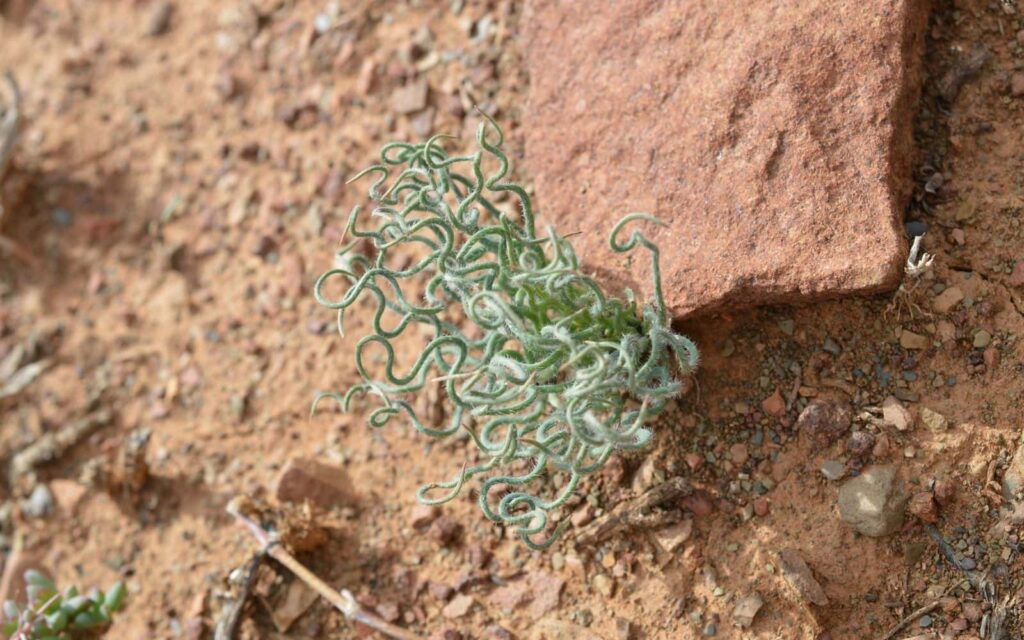
Propagating trachyandra from stem cuttings
Propagation by stem cuttings is practical and straightforward for trachyandra succulents. An unrooted cutting is effortless to establish, and you should strive to get it rooted before it dries out too much.
You have to be careful as cuttings can lose the ability to grow roots once they have become too desiccated.
Step 1: Choose a healthy and disease-free trachyandra for stem cutting. If you take the cutting at the beginning of the growing season, it will root the quickest.
For a cutting from the parent plant, use a sharp cutting scissor or knife that has been sterilized with alcohol. You should avoid using pruning shears as they can crush tissues.
A clean-cut allows the cutting to heal fast enough to survive without water during the callusing stage.
Step 2: Remove leaves from the lower part of the stem and dip the cut end in a rooting hormone. This is an optional step, but it helps with the root propagation, and the antifungal compound inside prevents rot.
Step 3: In a week to two weeks, the cutting part forms a protective callus. A callus is a dry, hard tissue layer that develops over the cut surface.
When you see thick enough callus at the cut side, the cutting is ready to plant. This hardening of the stem protects it from insects and disease entering the body of the plant.
Step 4: Prepare a potting mix composed of equal parts of potting soil, perlite, or pumice. Use a container that is large enough to allow the roots to spread.
Plant the stem cutting in the potting mix. Water it immediately, then don’t water until the soil begins to dry out.
Step 5: After a few weeks, the trachyandra succulent stems should have rooted enough to transfer into a larger container. Make sure not to over-pot and keep the planter’s size proportionate to the root system’s size.
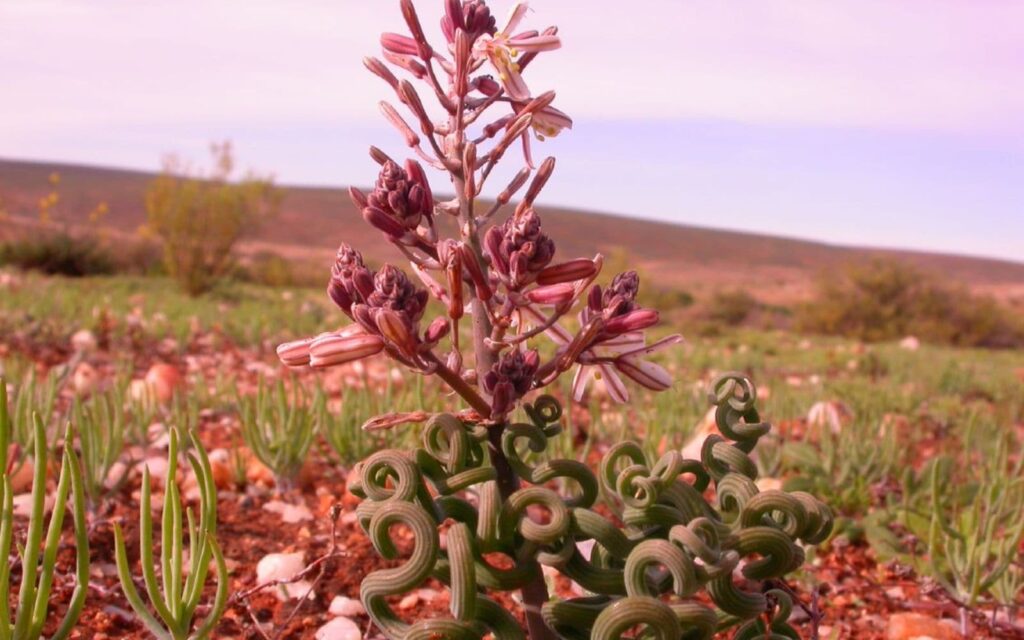
How to care for trachyandra
When it comes to trachyandra plant care, there are a few fundamental requirements of plants that you can take to keep them healthy.
Follow these growing conditions to give your trachyandra succulent the best chance to grow and remain healthy.
Soil
Native soil, where trachyandra grows, is usually not high in nutrients, so organic materials aren’t as crucial for optimal growth. However, well-drained sandy or rocky soils rich in microbes are healthier for all plant life.
To provide a suitable growing medium for trachyandra, use two parts of a non-peat-based potting mix, one-part perlite, and one part small-size gravel (like pumice).
If gravel isn’t available, a 1:1 mixture of garden mix soil and perlite will be sufficient. The ground must remain loose to let the air pass through to the roots. Soils that stay wet for extended periods will result in the collapse of the plant.
Watering
There is no doubt that proper water and sufficient light are the main contributing factors to trachyandra growth either indoors or outdoors.
Because succulents are focused on storing water, they can’t quickly dispose of excess moisture if grown under wet conditions.
Overwatering often causes the soggy roots to succumb to rot. The drawbacks of overwatering are real, so too is the pitfall of underwatering. Insufficient water can cause the roots to desiccate and die.
The simplest way to sufficiently water trachyandra is by drenching the soil and allowing excess water to seep out the container’s drainage hole.
After that, you should remove any residual water from the saucer pan. If you’re unsure if the plant needs water, use a flat pebble stone and place it at the soil surface near the plant.
If there is still moisture under the stone when lifted, don’t water. If the stone surface is completely dry, it’s time to water again.
Fertilizing
Trachayandra is self-sufficient and should be fed sparingly. It’s usually sufficient to provide extra nutrients during their growing season with a fertilizer that contains roughly equal proportions of nitrogen, phosphorous, and potassium.
Water-soluble foods are best for it and should be diluted to half the recommended strength label for other plants. You shouldn’t feed it during the stage of dormancy.
Temperature
Trachyandra prefers daytime temperatures between 70 °F and 85 °F (21.1 °C and 29.4 °C) and nighttime temperatures between 50 °F and 55 °F (10 °C and 12.8 °C). However, they can survive brief periods well outside of these ranges.
When you grow it indoors, a drop in temperature can often result in flower buds’ initiation. Locations next to windows often provide the ideal difference in temperature and satisfy the cooling needed to trigger flowering.
Sunlight
When you’re growing trachyandra outdoor, you should protect it from the searing rays of the sun. The trachyandra leaves can quickly get sunburned when moving from an indoor location to an outdoor site.
This happens as the leaves are covered with a waxy layer called a cuticle that thickens when exposed to sunlight. When planted indoors, the cuticle thins out to allow in as much light as possible. Moving a plant directly outdoors can result in permanent scarring.
Sufficient light is vital for healthy growth. Poor light can result in long, weak stems, with fragile and yellow color leaves resulting from a lack of chlorophyll.
You should make sure that you place it where it can get at least 3 to 6 hours of light every day. Placing it near the south-facing window or under artificial light helps trachyandra grow healthy.
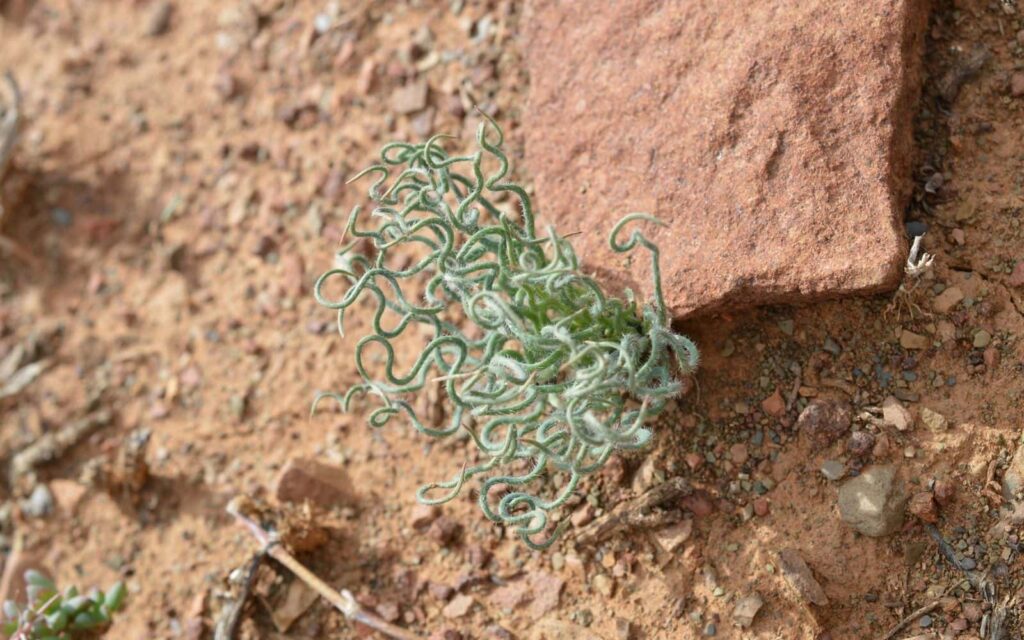
Trachyandra Pests and Diseases
Trachyandra health problems are more likely to occur if you grow them in shaded places or more humid situations. Pests and disease may include:
Aphids: These are 1–4 mm long insects that come in various colors. They sit on soft plant tissues and have their syringe-like tongue to suck nutrients from the plant tissue. These can readily transfer a virus or other diseases from plant to plant.
Leaf Spot: Leaf spots occur on a massive range of plants characterized by dead and discolored tissue on a leaf, usually brown or black. Most leaf spots flourish during or after wet weather.
Mealybug: These are very common to find on trachyandra succulent and cacti. They may live on the roots, under bark, or even dead woods and move about on a plant according to seasonal conditions.
Whitefly: Whiteflies come in different varieties. These young six-legged insects are small. They feed on trachyandra leaves and produce scales from which small, winged flies emerge.
Using fungal and insecticides are the best way to control these pests and diseases. In a small infestation, you can manually clean the plant to remove insects.
Where to buy trachyandra?
Unlike other traditional succulent plants, it may not be easy to buy them. Not all garden centers or stores carry this succulent. The best place to purchase trachyandra is through various online garden retailers such as Amazon, eBay, and garden place.
Often, they sell you different varieties that are easier to maintain and come with clear instructions on how to care for these plants. If you find it out of stock, you can contact the seller directly inquiring about the stock status or put your order on a waiting list.
Another place where you can buy trachyandra is through trade fairs or garden exhibitions. At these places, people often display exotic plants that you may have the option to buy.
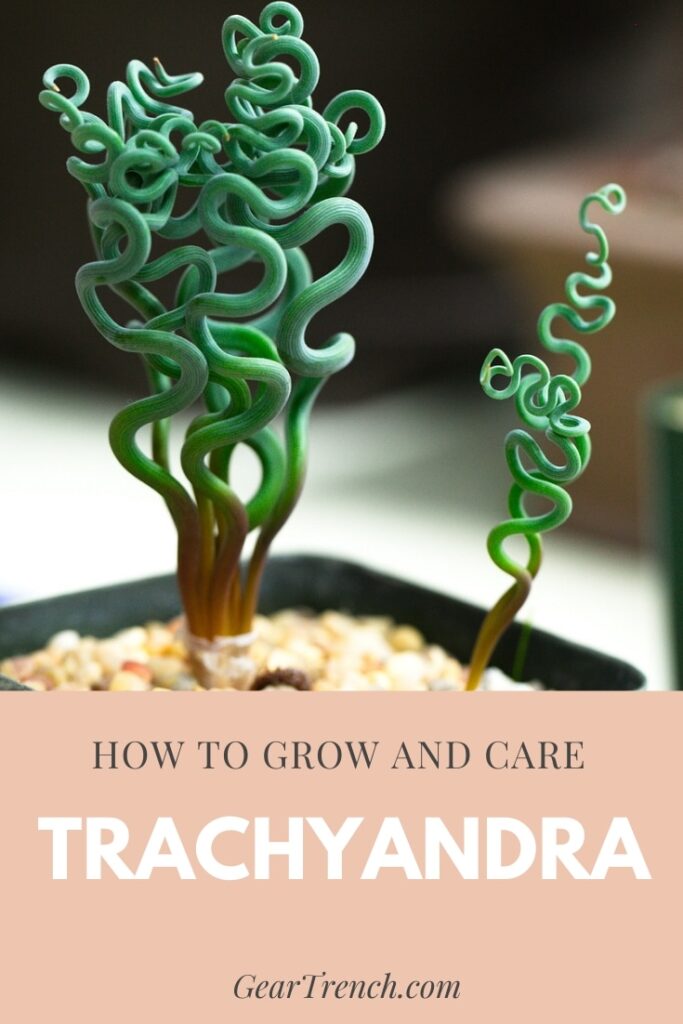
Don’t forget to share this post

